Moths in Your House? Here’s How to Get Rid of Them for Good
We’ve all been there. You pull a favorite wool sweater out of storage, and your heart sinks. It’s peppered with tiny, irregular holes. Or maybe you open the pantry for some flour and a little moth flutters out, leaving you with a deep sense of dread. It’s frustrating, and honestly, a little gross.
In this article
A lot of people react by grabbing a few cedar blocks or sticky traps, hoping for a quick fix. When that doesn’t work, the frustration mounts. Here’s the deal: getting rid of moths for good isn’t about zapping the few adults you see flying around. It’s about understanding what you’re up against and systematically breaking their life cycle. It’s a process, but it’s one you can absolutely handle yourself.
Let’s walk through the exact steps the pros take, from figuring out which moth you have to making sure they never come back.
First, Know Your Enemy: Pantry Moths vs. Clothes Moths
Before you do anything else, you have to know what kind of moth you’re dealing with. This is the single most common mistake people make. Trying to fight a pantry moth with a clothes moth strategy is like trying to fix a leaky pipe with a hammer—it just won’t work. There are two main culprits that invade our homes, and they live in completely different worlds.
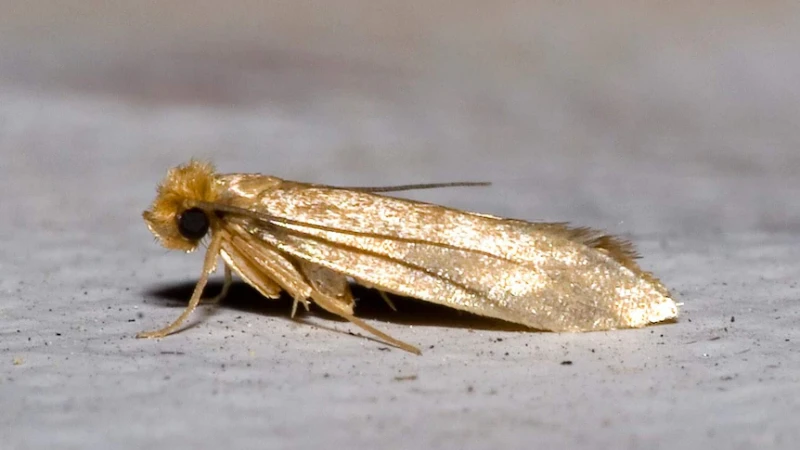
The Fabric Destroyers: Clothes Moths
If your clothes, carpets, or furniture are getting chewed up, these are your guys. They’re surprisingly sneaky and you’re far more likely to see their damage than the moths themselves. They hate light and prefer to hang out in the dark, undisturbed corners of your home.
- What to look for: The most common type is a small, golden-colored moth, only about a quarter-inch long. They’re weak fliers and tend to flutter or even run across surfaces rather than fly gracefully. Another type is a bit more brownish, sometimes with faint spots on the wings.
- Their calling card: The real damage is done by the larvae, not the adults (who can’t even eat). The larvae need a protein called keratin to grow, which is found in anything that comes from an animal. We’re talking wool, cashmere, silk, fur, and feathers. A key sign is finding fine, silky webbing stretched across fabric, or tiny, tube-like cases that look like grains of rice made from the very fabric they’ve been eating.
- Heads up! They’ll also go after cotton or synthetic fabrics if they’re stained with sweat, food spills, or body oils, which provide extra nutrients. So, always store clothes after they’ve been cleaned!
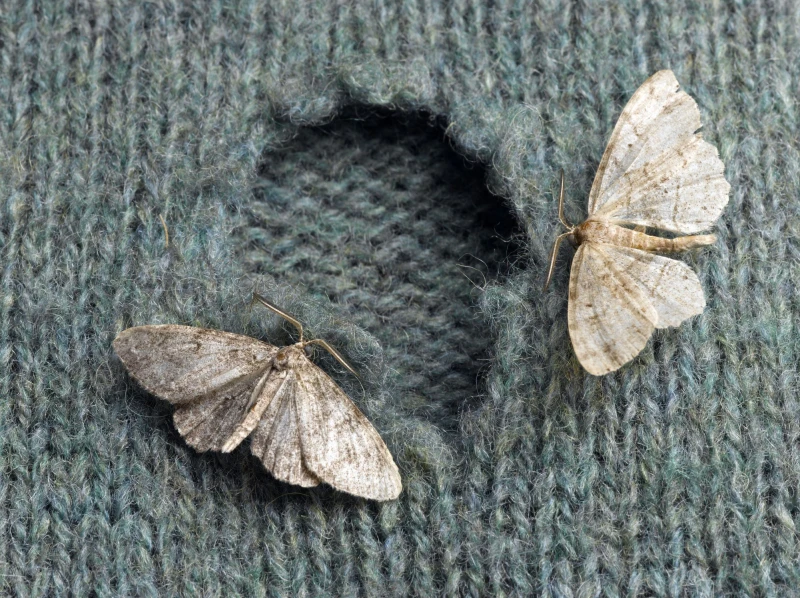
The Kitchen Invaders: Pantry Moths
If you’re seeing moths fluttering around your kitchen, especially near lights at night, you can bet you’ve got pantry moths. They couldn’t care less about your sweaters.
- What to look for: The most common pantry pest is the Indian meal moth. It’s about a half-inch long and has a very distinct look: the front part of its wings is a pale gray or tan, and the back part is a coppery-brown color. They are much stronger fliers than clothes moths and are drawn to light.
- Their calling card: The larvae are small, whitish worms that feed on a huge range of dry goods. Think flour, cereal, pasta, crackers, nuts, spices, dried fruit, and even dry pet food or birdseed. An infestation almost always starts when you unknowingly bring home an infested product from the store.
The Hunt: How to Find the Source of the Problem
Alright, now that you have a suspect, it’s time to play detective. Grab a good flashlight and maybe a magnifying glass, and prepare to be thorough. This is the most important part of the whole process, so don’t rush it.
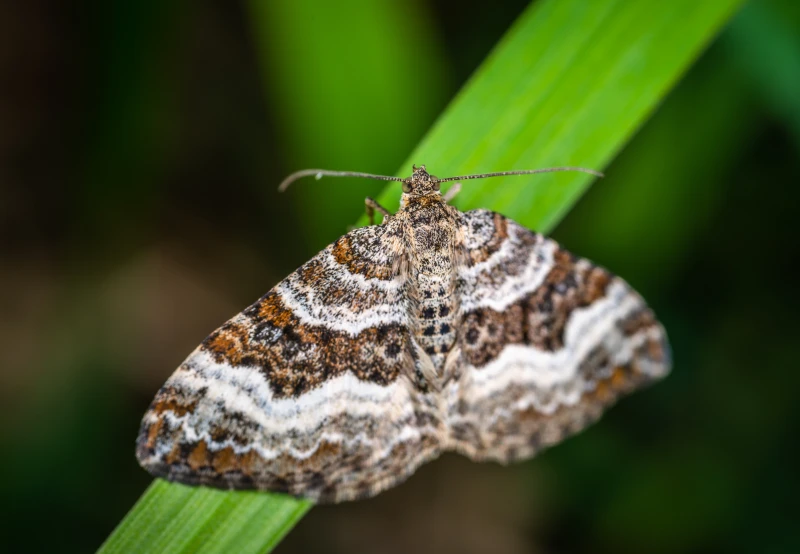
Inspecting for Clothes Moths
Think like a moth: you want dark, quiet, and a steady supply of food. Start with closets. And I mean, really start with them.
Empty the closet completely. No cheating. As you take things out, a quick tip is to put them directly into clean plastic trash bags and seal them. This quarantines the problem and stops any hidden larvae from crawling out and moving to another room while you work.
Once it’s empty, use your flashlight to inspect every dark corner, top shelf, and floorboard. Look for the tell-tale signs: the silky webbing, the rice-like larval cases, or something called “frass,” which is just a nice word for their droppings. It looks like fine, sandy dust, often the same color as the material they’ve been eating. Also, check under heavy furniture, along the edges of wool rugs, and inside upholstered furniture with natural fibers.
Sometimes a musty, stale smell in a closed space is your first clue. It’s a scent you learn to recognize.
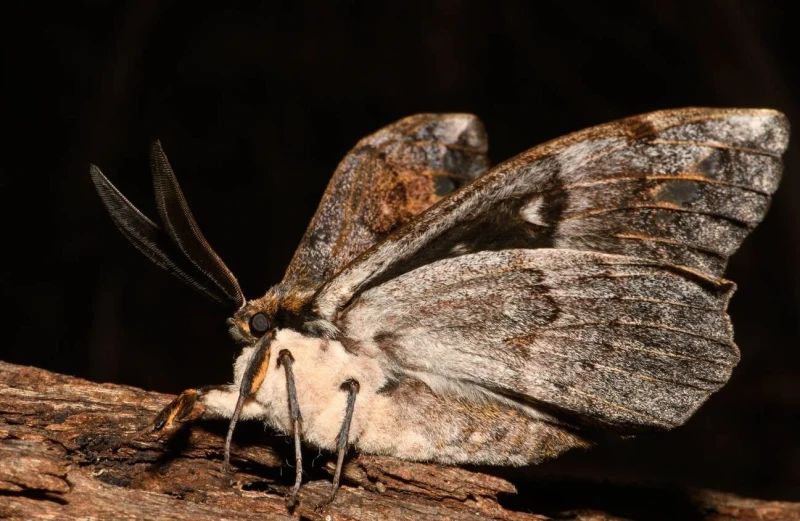
Inspecting for Pantry Moths
The kitchen investigation is a bit more straightforward, but it requires you to be ruthless.
Empty your pantry and cupboards. Take out every single box, bag, and container. Now, inspect every item. Look for clumpy webbing in flour or cereal, the little worm-like larvae themselves, or even adult moths inside the packaging. They can get into surprisingly tight spaces, like the screw-threads of a jar lid.
From my experience, the source is usually one or two forgotten items. I once found an infestation that had started in a forgotten box of holiday-themed pancake mix. The moths had spread from there to the pasta, the crackers, and even the dog treats. Don’t underestimate their travel skills!
Actionable Tip for Today: Go check your spice rack. Right now. Spices like paprika and cayenne pepper are common, overlooked hotspots for pantry moths. Check for any clumps or webbing. It takes 60 seconds and might just reveal your source!

The Purge: A Step-by-Step Eradication Plan
Found them? Good. Now it’s time to clean up and make sure they’re gone for good. You have to be methodical here, because skipping a single step can let the life cycle continue.
For a Clothes Moth Infestation
This is a multi-step attack. Plan for a solid afternoon for a standard closet; it’s a bigger job than most people think.
- Deep Clean the Space: Start by vacuuming the empty closet, storage chest, or room. Use a crevice tool to get into every single corner and crack. This physically removes eggs and larvae. Immediately take the vacuum bag, seal it in a plastic bag, and throw it in your outside trash can. If you have a bagless vac, empty the canister outside and wash it with hot, soapy water. Then, wipe down all hard surfaces with a 50/50 mix of white vinegar and water.
- Treat Your Fabrics: Everything that was in that space needs to be treated. Your options are:
- Hot Wash: If the label allows, wash items in water that’s at least 120°F (50°C) for 30 minutes, followed by a hot dryer cycle.
- Freezing: For delicates like cashmere that can’t be washed hot, this is your best bet. Seal the item in a plastic bag, squeeze out the air, and pop it in a freezer (set to 0°F or -18°C) for at least 72 hours. A pro trick is to thaw it for a day and then refreeze it for another 72 hours to kill any super-resilient eggs.
- Dry Cleaning: This is a reliable, though more expensive, option. The chemicals kill moths at all life stages. Expect to pay anywhere from $5 to over $25 per item, but for a valuable coat, it’s worth it.

For a Pantry Moth Infestation
Here, the strategy is all about disposal and containment.
- Be Ruthless: This is non-negotiable. Any food with even a hint of infestation—webbing, larvae, weird clumps—gets thrown out. Don’t try to save it. Seal it in a plastic bag and take it to the outside trash immediately. If in doubt, throw it out. Replacing a $4 bag of flour is much cheaper than dealing with this again.
- Deep Clean the Pantry: Once empty, vacuum everything. Every shelf, corner, and shelf-peg hole. Then wash all surfaces with that vinegar-water solution or hot, soapy water.
- Future-Proof Your Storage: This is the most important prevention step. Do not put new food back in its original paper or thin plastic packaging. Invest in quality airtight containers. We’re talking thick glass jars with screw-on lids, or sturdy, hard plastic containers like the ones from OXO or other similar brands. A good starter set can cost between $30 and $100, but it’s a one-time purchase that contains any future problem to a single jar.
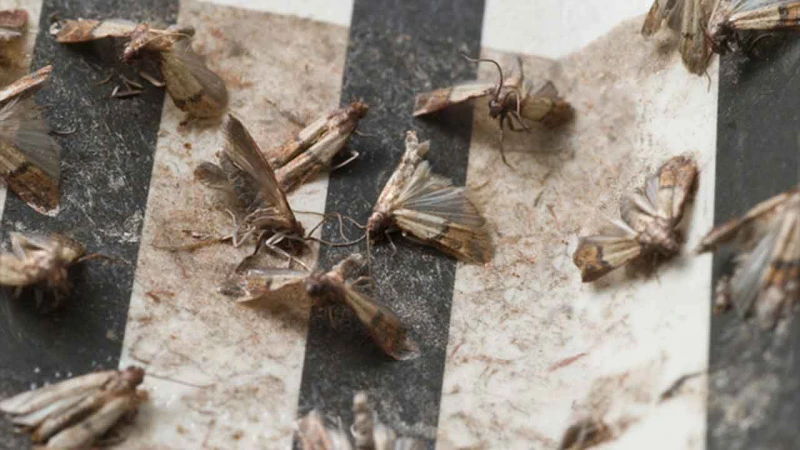
Playing Defense: Long-Term Moth Prevention
After the great purge, your job is to make your home as uninviting as possible to new moths.
Cedar blocks and herbal sachets (filled with lavender, rosemary, or thyme) are popular, but it’s important to understand what they do. They are repellents, not killers. Their strong scent can deter adult moths from laying eggs nearby, but they won’t kill existing larvae. To keep cedar working, you have to lightly sand it every 6-12 months to release fresh oils. Sachets lose their potency and should be replaced every few months.
For monitoring, pheromone traps are excellent. You can find them from brands like Safer Brand or Dr. Killigan’s online or at hardware stores, usually for $10-$20 a pack. They use a scent to attract and trap male moths. They will NOT solve an infestation on their own, but they are a fantastic early-warning system to let you know if you have a problem brewing.

A Serious Warning About Mothballs
Okay, let’s talk about traditional mothballs. To be frank, I almost never recommend them. The products containing naphthalene or paradichlorobenzene are regulated pesticides. They work by releasing a toxic gas that is harmful to people and pets if inhaled. According to government health agencies, they should only be used in completely airtight containers (like a sealed garment bag or trunk), never in an open closet or attic where fumes can leak into your living space. Given how effective deep cleaning and proper storage are, the health risk just isn’t worth it.
When to Wave the White Flag (and Call a Pro)
Look, most minor moth situations are totally manageable with the steps above. But sometimes, you need to call for backup.
- It’s Widespread: If you’re finding signs of moths in multiple rooms, the infestation might be more established than you can handle alone.
- They’re in the Walls: In older homes, moths can infest things like old wool insulation or horsehair plaster. You can’t treat that yourself.
- You Have High-Value Items: If an antique rug, a taxidermy piece, or an irreplaceable family heirloom is at risk, call a professional pest management company or even a specialized textile conservator. Don’t risk it.
- You’ve Tried and Failed: If you’ve done everything right and they still come back, it’s time. A pro has access to different tools and can get to the root of a persistent problem. An initial professional inspection and treatment can range from $150 to $400, depending on where you live and the severity of the issue.
Ultimately, beating a moth problem takes patience and thoroughness, not a magic spray. By correctly identifying the pest, hunting down the source, and committing to a deep clean and smarter storage, you can take back your home and keep it protected for the long haul. The peace of mind is absolutely worth the effort.

Inspiration:

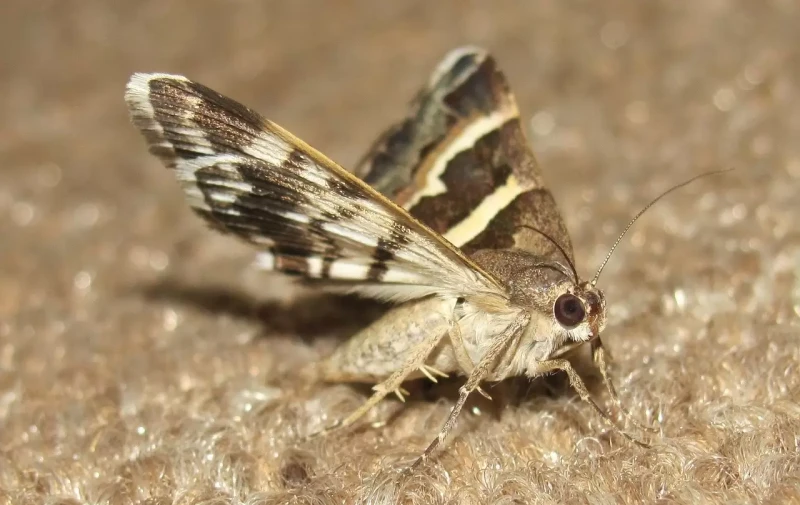
Nearly 85% of calls to pest control for moths are due to a failure in identifying the source.
This means homeowners often treat the bedroom closet when the real infestation is thriving in a forgotten bag of birdseed in the garage or a wool rug in the attic. Before you begin any treatment, conduct a full-house inspection. Check every food source (including pet food and decorative dried grains) and every natural fiber item (old coats, carpets, taxidermy). This single step can save you weeks of frustration.
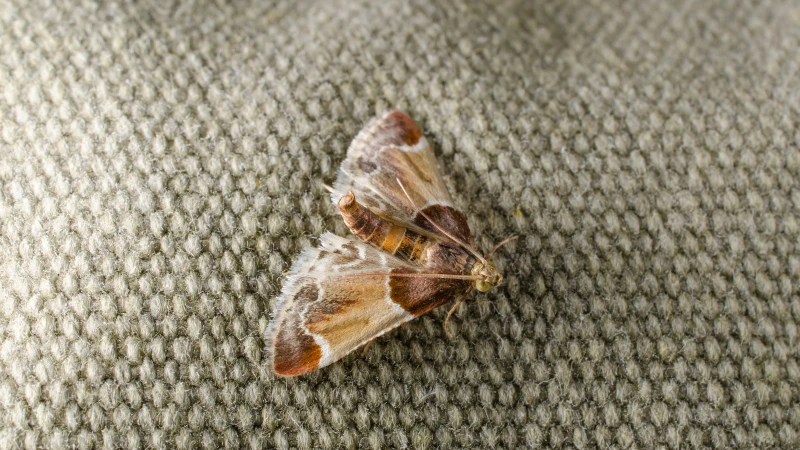
Can you truly freeze or bake the moths away?
Absolutely, and it’s one of the most effective non-chemical methods. For larvae and eggs hidden in delicate items like cashmere or silk, place them in a sealed plastic bag and freeze them. The key is consistency: your freezer must be at or below 0°F (-18°C) and the item must remain there for at least 72 hours to ensure all life stages are eradicated. For more durable items, a cycle in the washing machine at a temperature above 120°F (50°C) is just as lethal. Heat is your other best friend in this fight, penetrating fabrics to kill what you can’t see.
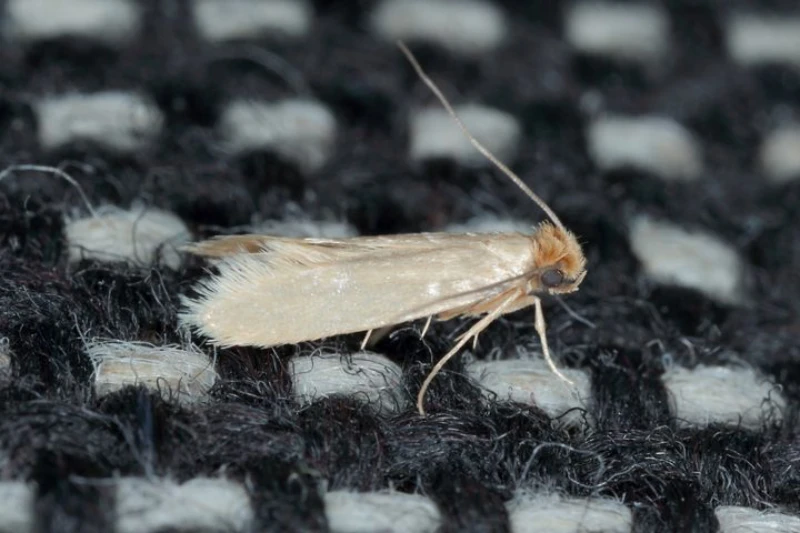
When choosing pheromone traps, one size does not fit all. The attractants are species-specific, so make sure you buy the right one for your problem.
- For the Kitchen: Look for traps specifically for Indian Meal Moths (Pantry Moths). Brands like Dr. Killigan’s or the widely available Safer Brand pantry moth traps use a powerful pheromone to lure the male moths, disrupting the breeding cycle.
- For the Closet: You’ll need traps for Webbing Clothes Moths (Tineola bisselliella). Products like TERRO Closet & Pantry Moth Traps Plus Alert or ProPest Pheronet traps are designed for this specific pest.
Prevention is about creating an uninviting environment. A simple, fragrant sachet can be a powerful deterrent for clothes moths. Skip the weak cedar blocks and create your own. Simply fill small muslin bags with a potent mix of dried lavender, rosemary, cloves, and thyme. These strong essential oils overwhelm a moth’s senses, encouraging them to find a less aromatic place to lay their eggs. Tuck them into drawers, hang them in closets, and place them in storage bins for year-round protection.










